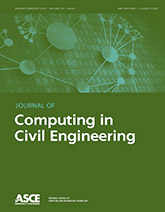Framework for Probabilistic Vulnerability Analysis of Interdependent Infrastructure Systems

Applegate, C., and Tien, I., “Framework for Probabilistic Vulnerability Analysis of Interdependent Infrastructure Systems,” ASCE Journal of Computing in Civil Engineering, Vol. 33, No. 1, January 2019
Abstract — Critical infrastructure systems are deteriorating and experiencing increased cascading failures. In this paper, we propose a new probabilistic framework for modeling interdependent infrastructure networks. As part of this framework, we present our modeling approach and the accompanying sets of algorithms that enable the computationally efficient probabilistic modeling of large infrastructure systems considering interdependencies between networks. The proposed method creates a representative Bayesian network (BN) of the system, which provides exact inferences over the network compared to simulation-based approximations. With the traditional computational limitations of BNs to tens of parent component nodes per child system node, our generalized framework enables computationally efficient BN modeling of systems of, for example, hundreds of component nodes, including component-level performance and interdependent connections across networks. Our approach requires only simple inputs based on the basic component characteristics of location, type, connectivity, and initial failure probabilities. We modeled three types of interdependencies across the system—service provision, geographic, and access for repair. We combined a minimum link set (MLS) formulation with the idea of supercomponents in order to reduce network complexity without any approximating assumptions. We present algorithms to efficiently identify MLSs and supercomponents, as well as to identify and remove any cyclic dependencies that arise across the network. Once the BN was constructed, we were able to perform exact inference analyses over a range of component state and hazard event scenarios in order to identify vulnerabilities across the network. The main novelty of the paper is to enable the probabilistic assessment of large, complex, interdependent infrastructure systems. We were able to consider performance from the component level and model hundreds of component nodes in a computationally efficient manner without approximating assumptions. We accounted for interdependencies between systems with exact inference results. The model can be used to investigate the potential for cascading failures and to prioritize critical components for repair, replacement, or reinforcement. We applied the proposed methodology and algorithms to the water distribution network in Atlanta, Georgia, and its dependencies with the power system. We validated the model using the results from a recent interdependent outage event.
Leave a Reply